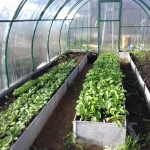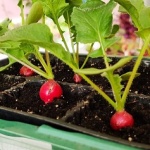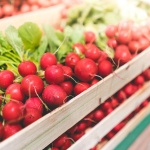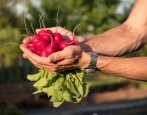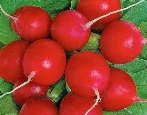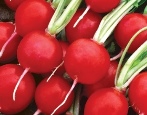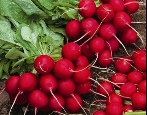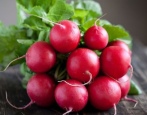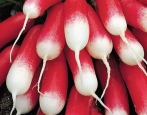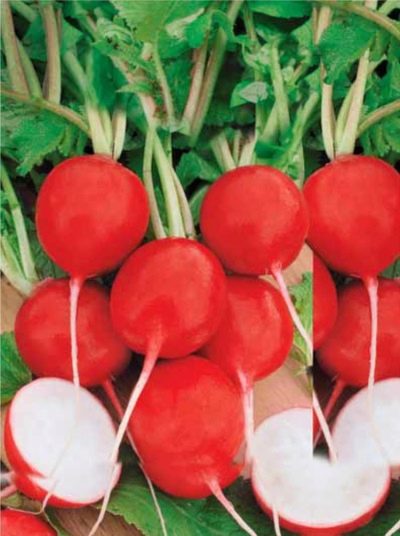
- Authors: Kononov A.V., Krasnikov L.G., Eike Kampe
- Year of approval: 2005
- Ripening terms: early maturing
- Leaf rosette shape: semi-upright
- Leaves: obovate, green
- Petiole: with anthocyanin coloration
- The form: elliptical
- Coloration: bright red
- Weight, g: 21
- Color of the pulp: white
The Askania radish variety was bred jointly by Russian and German breeders A. V. Kononov, L. G. Krasnikov and Eike Kampe. Despite the fact that this radish has been known for less than 20 years, it attracts the attention of many gardeners. Its early ripening, great taste and disease resistance contribute to its popularity.
Description of the variety
Ascania radish is intended for cultivation both in protected and in open ground. It is a fast-growing, early-maturing, high-yielding variety. It forms root crops well on soils of different fertility in conditions of high temperatures and a long day. It is characterized by resistance to arrow formation and flowering. Ascania is a variety with excellent immunity, it is practically not susceptible to various kinds of diseases.
Characteristics of the appearance of the plant and root crops
The Askania variety is characterized by a semi-erect leaf rosette, which reaches a height of 20 cm. The petiole has an anthocyanin (purple) color. The leaves are obovate, powerful, colored green.
The root crop is large in size, has an elliptical shape. The length of the Ascania radish is about 10 cm, the weight of one fruit reaches 21 g. This variety is characterized by a bright red color. The head of the root crop is convex, there is a thin tail at the end. The rest of the surface is leveled and smooth.
Purpose and taste of tubers
The Ascania variety is characterized by dense juicy crunchy pulp, which has a pure white color. Radish has excellent taste. Root crops of the variety are characterized by a spicy mild taste. Ascania is ideal for fresh consumption. Its tubers retain their elasticity for a long time and do not become flabby.
Maturation
In terms of ripening, Ascania radish belongs to the early maturing varieties. The period from germination to harvest is only 22-24 days. The variety can be planted several times per season, it ripens successfully even in early autumn.
Yield
This variety is high-yielding. The average yield is 1.9 kg / sq. m. Larger roots are typical for the autumn period.
Growing regions
The Ascania radish variety grows successfully in open ground conditions in the Central, Central Black Earth, Middle Volga, Lower Volga, North Caucasian, North-Western regions. In the Northern, Volgo-Vyatka, Ural, Siberian and Far Eastern regions, it is preferable to grow this variety using film shelters in greenhouses and hotbeds.
Growing and care
Ascania radishes can be grown throughout the season in several periods. The first sowing in open ground is best done in late April - early May, the second - from mid-July to late August. This variety is suitable for soils of varying fertility, but the planting site must be sunny.
You should be aware that other Cruciferous crops should not grow as predecessors on the proposed site for radishes, since common diseases of this family are transmitted through the soil. It is advisable to place the seeds in the soil no more than 2 cm and follow the planting scheme 5-7x15 cm.
Care consists in systematic watering as the soil dries up, loosening, timely weed removal. With thickened crops, the seedlings are thinned out, leaving 6-7 cm between the plants.
The radish of the Askania variety is characterized by an intensive weight gain without special additional dressings. It is strongly not recommended to apply fresh manure to the soil, and mineral fertilizers should not contain a large amount of nitrogen. Ripe root crops must be removed immediately, because overripening negatively affects their taste.


